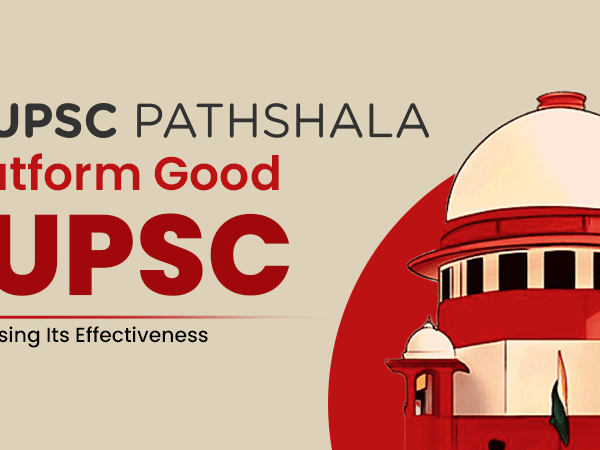The pandemic situation has not worked out well for everyone. While for some people, the lockdown has provided ample time for preparation, others suffered from a lack of time. If you are a part of the latter group and haven’t prepared enough for the exam, this article is for you.
The article will take you through a detailed syllabus of the CSAT paper that constitutes the second part of the UPSC prelims exam. Read on to know more about the exam pattern and marking scheme that will help you strategize your study plan accordingly.
What is CSAT in UPSC?
The first milestone for UPSC is the Prelims examination. The Prelims exam includes two main papers:
- General Studies Paper 1
- CSAT or General Studies Paper 2
The CSAT or Civil Services Aptitude Test analyses the reasoning aptitude, analytical skills, interpersonal skills, and decision-making skills of the candidates. The assessment can further be divided into two papers – General Studies and General Ability tests. The CSAT paper 2 is recognized as a qualifying paper with 33% being the minimum qualifying marks. The exam consists of multiple-choice questions.
CSAT Syllabus and Exam Pattern for UPSC 2020
The CSAT Syllabus for UPSC 2020 is as follows.
General Studies
The General Studies assessment for CSAT Prelims consists of 100 questions that have to be solved within two hours. The examination carries 200 marks, and negative marking deducts 0.83 for every wrong question. The syllabus for the paper includes:
-
Current events of national and international importance
-
History of India and Indian National Movement
-
Indian and World Geography- Physical, Social, Economic Geography of India and the World
-
Indian Polity and Governance- Constitution, Political System, Panchayati Raj, Public Policy, Rights Issues, etc.
-
Economic and Social Development- Sustainable Development, Poverty, Inclusion, Demographics, Social Sector Initiatives, etc.
-
General issues on Environmental ecology, Biodiversity, and Climate Change
-
General Science
Also Read : Farmers Bill 2020 Explained: Things to Know for UPSC IAS Exam Preparation
General Abilities Test
The General Abilities Test for CSAT Prelims consists of 80 questions that have to be solved within two hours. The assessment carries 200 marks in total, and negative marking deducts 0.83 for every wrong question. The syllabus for the examination includes:
-
Comprehension
-
Interpersonal skills including communication skills
-
Logical reasoning and analytical ability
-
Decision making and problem-solving
-
General mental ability
-
Basic numeracy (numbers and their relations, orders of magnitude, etc.) (Class X level), Data interpretation (charts, graphs, tables, data sufficiency, etc. — Class X level)
Marking Scheme for the Prelims CSAT Papers
200 marks are carried by the General Studies paper where 2 marks are awarded for every correct answer. 200 marks are carried by the General Abilities test where 2.5 marks are awarded for every correct answer. For questions that are left blank, there will be no scores allotted. For every wrong answer, a negative marking 33% that is, 1/3rd of the score is deducted for every answer, and 1 mark is deducted for three wrong answers.
Important Books for CSAT Preparation
While it is advisable to find coaching centers or online classes for CSAT Preparation for a better practice strategy, in case you want to do some last-minute preparation at home for the exam, you can opt for the following books.
-
TMH Manual Paper 2-CSAT by McGraw Hill
-
Cracking the CSAT Paper 2 by Arihant Experts
-
A Modern Approach to Verbal and Non-Verbal Reasoning by R.S. Aggarwal
-
Analytical Reasoning by M.K. Pandey
-
10 Practice Sets CSAT Paper 2 2020 by Varun Bali Vivek Sharma, Deepika Singla
Conclusion
Now that you are familiar with the IAS CSAT Syllabus, you can pick the topics one by one and then prepare for them simultaneously.
If you are already done with your preparation, you can practice mock tests and previous question papers for a better understanding of the exam pattern. Do not forget to take breaks while preparing for the exams and following a proper sleep pattern. For the professional help of a personal mentor with your UPSC preparation, you can sign up here. All the best!
Also Read : Who Proposed the Continental Drift Theory? Continental Drift Theory Guide for UPSC







Thank you for providing the pattern, this article was very useful and structured, can you state some quick tips for the examination?